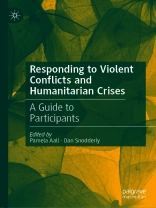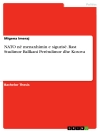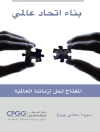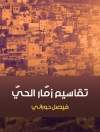This book introduces the four principal sets of institutions that engage in bringing peace and relief to societies mired in violent conflicts and humanitarian crises—the United Nations and other international bodies; non-governmental organizations; civilian government agencies; and militaries. Because these institutions have distinct goals as well as overlapping mandates and activities on the ground, they do not always collaborate effectively, due in part to a lack of familiarity with how the other institutions are organized, make decisions or act on the ground. Despite declining public support for large-scale, state-building missions recently, more complex interagency efforts have evolved in partnership with host country governments. Numerous third parties continue to undertake peacebuilding, stabilization, and humanitarian relief measures around the globe. This book is intended primarily for those serving in the field, but it is also helpful to headquarters personnel and policymakers, as well as military and agency trainees and university students.
Содержание
1. Introduction.- 2. International Organizations.- 3. Nongovernmental Organizations.- 4. Civilian Government Agencies.- 5. The U.S. Military.
Об авторе
Pamela Aall is a senior advisor for conflict prevention and management at the United States Institute of Peace and previously headed USIP’s education and training programs. She has co-authored and co-edited a number of books on conflict resolution, including Rewiring Regional Security in a Fragmented World and Managing Conflict in a World Adrift.
Dan Snodderly is an editor and publishing consultant in Washington, DC. He previously served as USIP’s director of publications and worked as an editor at Cornell University Press and Encyclopedia Britannica. He is the author or editor of three books, including Peace Terms: Glossary of Terms for Conflict Management and Peacebuilding.












